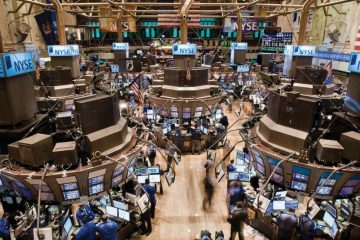The Donald Trump bump may be more like a friendly tap, at least in the context of post-election rallies.
That, of course, hasn’t stopped Trump from talking like he created quite a climb. Anticipation of faster growth under a united Republican government has driven much of the recent gains, which a number of market watchers expect will soon put the Dow Jones Industrial Average above 20,000 for the first time in history. And the president-elect in a meeting on Wednesday with top technology executives took a victory lap for the market’s recent run,
“They’re all talking about the bounce, so right now everybody in this room has to like me at least a little bit,” Trump told the CEOs of Amazon, Microsoft, IBM, Google’s parent company, and other tech titans.
Indeed, the Dow rose just over 1,500 points, or 9%, from Nov. 8 to Dec. 12. That makes the Trump Bump, for now, the largest post-election gain in percentage terms by the Dow index over that time frame—at least going as far back as the Hoover Mover, when stocks rose 3.6%following Hubert Hoover’s election.
But some market-watchers argue that the Dow isn’t a great proxy for the broader market—indeed a good portion of the Dow’s recent run can be attributed to a single stock, Goldman Sachs gs . And as measured by the S&P 500, which is seen by many as a better, wider market gauge, the recent stock market run isn’t all that historic. The S&P 500 is up 5.6% since Trump won the election. That only ranks as the third-best five-week post-election run.
The largest post-election rally: The Bush Push. The S&P 500 rose 6% through the Dec. 12 following George W. Bush’s second presidential win in 2004. The Eisenhower Happy Hour rally, in 1952, also saw stocks jump more than the Trump Bump, up 5.9%. (Stocks fell 3% following Eisenhower second presidential win in 1956—the so-called Eisenhower Sour stock dip.)
In all, following the past 22 elections, the stock market has risen 14 times in the month following the election, or 63% of the time. Still, even if you take out the Obama Trauma, in which the stock market fell nearly 13% following the current president’s election in 2008—and, to be fair, the country was in the middle of a financial panic—the average return in a month following the election is 0.4%. That makes Trump’s market rally a pretty significant one, if not totally out of ordinary.
So while some may see the Trump Bump as irrational exuberance, it’s really just a case of market giddiness.

